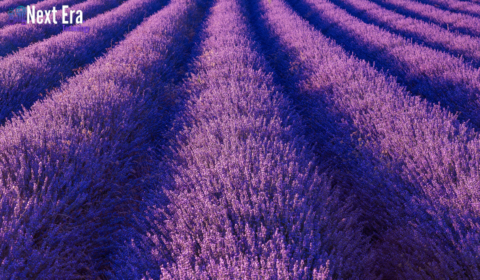Introduction to and DTF vs Sublimation Printing
DTF vs Sublimation Regarding custom apparel and merchandise, two printing methods often steal the spotlight: DTF (Direct-to-Film) and Sublimation.
Both techniques have a unique appeal, but which is superior for your projects? As businesses and DIY enthusiasts explore these options, understanding the ins and outs of each method becomes crucial.
Whether you want to create vibrant designs that pop or detailed prints with intricate colors, DTF and sublimation offer distinct advantages.
Let’s dive into this great debate as we unravel everything you need about DTF vs. Sublimation printing!
Differences between DTF and Sublimation Printing
DTF (direct-to-film) and sublimation printing are popular methods for creating vibrant fabric designs. However, they cater to different needs.
DTF involves printing a design onto a special film, which is then transferred onto the fabric using heat and pressure.
This process allows for bright colors and intricate details that adhere well to various materials, including cotton blends.
On the other hand, sublimation works by turning solid dye into gas without passing through a liquid phase.
This method requires polyester or polymer-coated surfaces to produce stunning images that become part of the fabric.
The result? A soft feel with no heavy transfer layer.
Each technique has its unique application based on fabric type and desired outcome.
Understanding these differences can help you choose between DTF and Sublimation for your next project.
Pros and Cons of DTF Printing
DTF printing, or Direct-to-Film printing, offers several advantages.
It’s highly versatile, and you can print on various fabrics, including cotton and polyester blends. This flexibility makes it a favorite among apparel decorators.
Color vibrancy is another perk. DTF prints boast bright colors and sharp details that attract attention. The results are often eye-catching, which is great for branding.
On the downside, there are some challenges to consider. DTF transfers may require a heat press with specific settings for optimal adhesion. If not done correctly, this can lead to peeling or fading over time.
Additionally, while equipment costs have decreased recently, initial investments can still be substantial for small businesses starting in the customization game.
When deciding if DTF suits your needs, balancing quality with budget constraints is essential.
Pros and Cons of Sublimation Printing
Sublimation printing has gained popularity for a reason.
One of its biggest DTF vs Sublimation advantages is the vibrant color reproduction. The inks become part of the fabric, leading to long-lasting designs that resist fading.
Another benefit is versatility. You can use sublimation on various materials, like polyester and specially coated items.
This opens doors for unique products, from apparel to custom home decor.
However, it’s not all sunshine and rainbows. One major drawback is the limitation on fabric types.
Sublimation works best with DTF vs Sublimation synthetic fibers, meaning natural fabrics like cotton are off-limits.
Cost can also be a concern; initial setup expenses for equipment may deter newcomers.
The process requires specific temperature controls and press time, which might complicate production schedules for some users.
Factors to Consider When Choosing Between DTF and Sublimation Printing
When deciding between DTF and sublimation printing, several factors come into play.
First, consider theDTF vs Sublimation material you plan to print on.
DTF works well on a variety of fabrics, including dark textiles. Conversely, sublimation is best suited for polyester or specially coated surfaces.
Next, evaluate your design needs. If vibrant colors and intricate details are essential for your project, sublimation might have the edge due to its ability to produce stunning visuals.
The budget also DTF vs Sublimation matters. DTF printing can require less initial investment in equipment compared to sublimation setups that often need more specialized printers.
Think about production time as well. DTF tends to offer quicker turnaround times since it involves fewer steps than traditional sublimation processes.
Assess your prints’ long-term durability requirements. Each method has different levels of wash resistance and fade characteristics after repeated washes or exposure to sunlight.
Case Studies: Successful Use of DTF and Sublimation Printing

DTF vs Sublimation A local apparel brand recently turned to DTF printing to refresh its merchandise. They were able to produce vibrant, intricate designs on dark fabrics quickly.
Customers loved the soft feel and durability of the prints, leading to a noticeable increase in sales.
On another front, a home décor startup embraced sublimation printing for custom pillowcases and wall art. This method achieved stunning colors that wouldn’t fade over time, and the unique patterns attracted attention on social media platforms.
In both cases, each brand found success by selecting the right method for their specific needs.
The choice between DTF and sublimation can dramatically influence product quality and customer satisfaction. Each technique has proven valuable in different contexts across various industries.
Conclusion: Which method is right for you?
DTF vs Sublimation Choosing between DTF and sublimation printing ultimately depends on your specific needs, goals, and the projects you wish to undertake.
Sublimation might be the way to go if you prioritize vibrant colors and intricate fabric designs.
However, DTF is more suited for your ventures if you want versatility in material choices and easier application processes.
When deciding, consider budget, production volume, and desired fabric types.
Each method has DTF vs Sublimation strengths that cater to different markets, from custom apparel to promotional items.
Evaluating these aspects will help guide you toward a choice that aligns with your creative vision.
The best approach is often a mix of both methods, depending on the project. Experimenting with each technique can provide valuable insights into their unique capabilities while expanding your skill set as a printer or designer.
Whether it’s vibrant prints from sublimation or detailed transfers via DTF, understanding how they fit into your business model is key to unlocking new opportunities in the world of printing.
Exploring both DTF vs Sublimation options allows for flexibility in creating stunning products tailored perfectly for any occasion.









